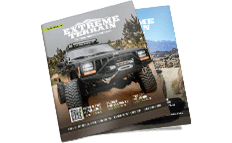Upgrading & Maintaining your 2014 Toyota 4Runner The 2014 Toyota 4Runner, a popular choice among off-road enthusiasts, explorers, and city commuters alike, presents a wide array of opportunities when it comes to upgrading and maintaining it with aftermarket mods. Ensuring the right selections requires a comprehensive understanding of the categories of these parts, their materials, quality standards, production methods, and compatibility with this specific make and model. Automotive parts are broadly divided into categories such as powertrain parts, steering and suspension assemblies, braking systems, exhaust, and interior/exterior accessories. Powertrain parts, which include the engine, transmission, and various related constituents like cams, gaskets, seals, and belts, play a crucial role in the vehicle's performance. Materials are chosen for heat tolerance and durability; the engine block, for example, is typically cast iron or aluminum.
Quality and Material Considerations
Braking systems consist of parts such as calipers, pads, and discs, demanding high-quality iron or steel for optimal heat dissipation during sudden stops. Steering and suspension assemblies encapsulate parts like struts, springs and control arms, frequently built from high-strength steel. Exhaust devices, responsible for directing waste gases away safely, commonly employ stainless steel or aluminized steel for corrosion resistance. Interior/exterior accessories, embracing garnishing items and functional accessories like roof racks, are usually made from composites or plastic for weight reduction.
Manufacturing Processes & Quality Standards
Manufacturing processes, whether casting, forging, or injection molding, depend upon the part's material and function, significantly influencing its quality. Forged parts, like some alloy wheels and performance-oriented drive shafts, are notable for their high strength-to-weight ratio. Quality standards such as ISO 9001and TS16949, ensure consistency, safety, and reliability, while OEM (Original Equipment Manufacturer) compatibility denotes that the part will fit and function as intended in a particular make and model.
Considering the Vehicle's Condition
Selection of parts also is influenced by factors such as the vehicle's age, mileage, maintenance history, and operating conditions. For instance, an older 4Runner with high mileage and rigorous off-road use might necessitate a more robust suspension system or a performance-enhanced exhaust apparatus to maintain or improve performance levels. On the other hand, a regularly-serviced, lightly-used vehicle could perform optimally with OEM-quality parts installed.
Performance Characteristics
Performance characteristics, another key consideration, refer to the parts' ability to enhance the vehicle's power, handling, fuel efficiency, or aesthetic appeal. A performance air intake system or exhaust, for instance, can contribute to increased engine efficiency, thereby improving horsepower and fuel economy. Hybrid ceramic brake pads may offer improved stopping power and longer lifespan compared to standard pads. Purchasing and installing accessories and parts for the 2014 Toyota 4Runner requires balancing numerous considerations. Understanding the categories, manufacturing processes, materials, performance characteristics, and compatibility of these parts, coupled with a grasp of the impact of the vehicle's age, mileage, and use history, can equip enthusiasts, mechanics, and professionals to make sound decisions, ensure optimal vehicle performance, and contribute to road safety. As always, regular maintenance remains vital to part longevity and overall vehicle health.

















